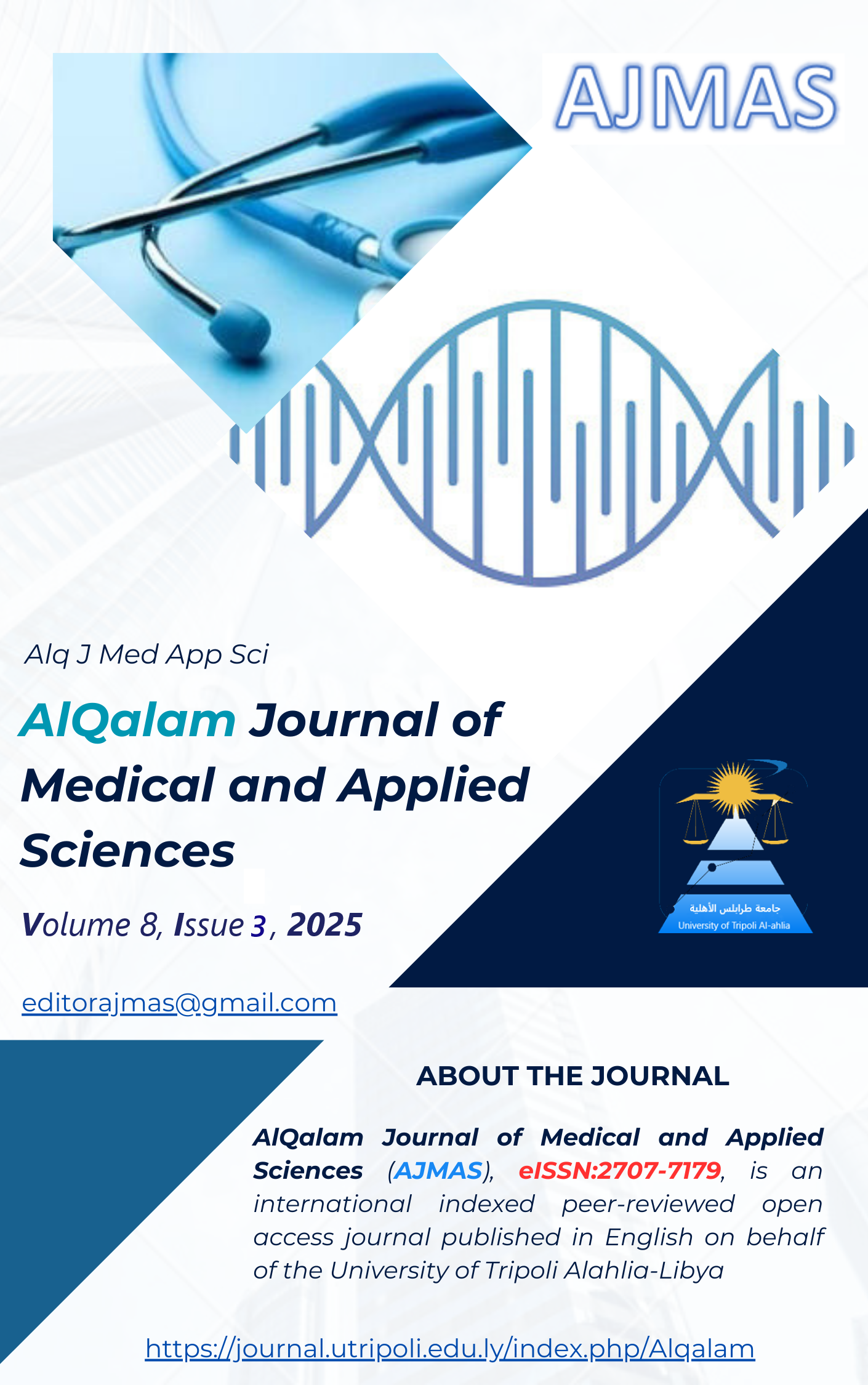Clinicopathological Characteristics of Cutaneous Squamous Cell Carcinoma and Basal Cell Carcinoma in a Libyan Study: A Retrospective Analysis
DOI:
https://doi.org/10.54361/ajmas.258330Keywords:
Skin Carcinoma, Basal Cell Carcinoma, Squamous Cell Carcinoma, Facial Skin.Abstract
Cutaneous squamous cell carcinoma (cSCC) and basal cell carcinoma (BCC) collectively represent the most common human malignancies worldwide, yet comprehensive data from North African populations remain scarce. This retrospective study examined 62 histologically confirmed cases of facial cSCC (n=28) and BCC (n=34) managed at a Libyan tertiary referral center between 2021-2023. Demographic analysis revealed a median age for BCC patients (70.3 years) compared to cSCC (66.2 years; p=0.18), with a notable female predominance in BCC cases (65% versus 55% for cSCC). Anatomically, BCCs showed a strong predilection for the nasal dorsum (45%) and infraorbital region (30%), while cSCCs demonstrated similar nasal involvement (42%) but greater lip (40%)and cutaneous cheek (25%) distribution. Histopathological evaluation identified nodular subtype as the predominant BCC pattern (70%), with well-differentiated tumors comprising most cSCC cases (60%). High-risk features, including infiltrative BCC growth and poorly differentiated cSCC, were present in 20% of cases. Surgical outcomes revealed margin positivity in 35.7% of cSCCs (25% close, 10.7% involved) versus 26.5% of BCCs (20.6% close, 5.9% involved), with corresponding recurrence rates of 18% and 6% respectively. These findings highlight distinct clinicopathological patterns in the Libyan population, including advanced age at presentation, gender disparity in BCC occurrence, and elevated surgical margin positivity. The results underscore the urgent need for targeted public health interventions addressing sun protection in high-risk demographics, enhanced surgical training for facial tumor management, and the development of national treatment guidelines adapted to resource-limited settings. This study provides the first comprehensive characterization of facial NMSCs in Libya, establishing critical baseline data for future research and healthcare policy development in the region.
Downloads
Published
How to Cite
Issue
Section
License
Copyright (c) 2025 Ayad Alkhalifi, Najia Bengharbia, Mustafa Zaneen, Areej Alkhalifi, Nagah Majdoub

This work is licensed under a Creative Commons Attribution 4.0 International License.















